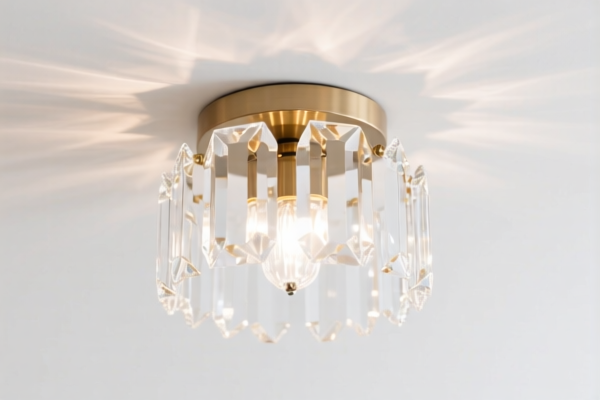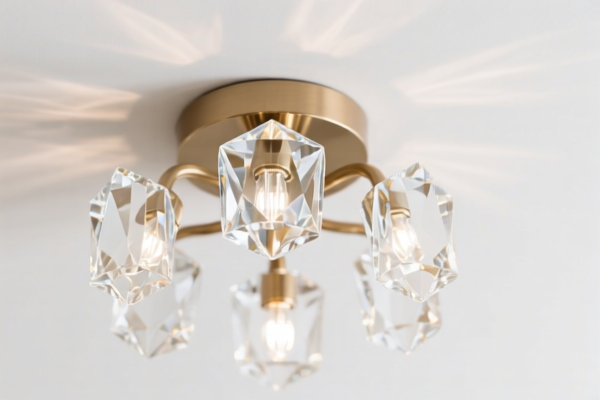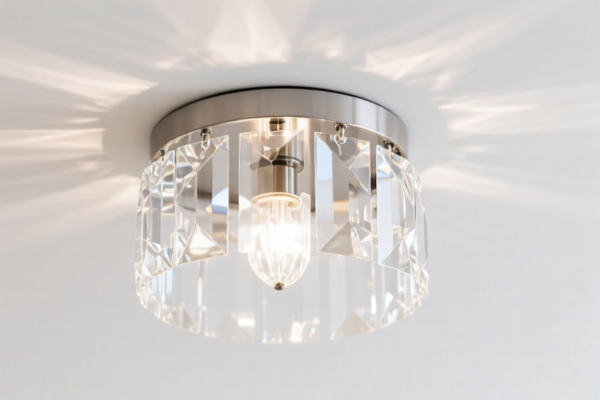| HS Code | Official Doc | Tariff Rate | Origin | Destination | Effective Date |
|---|---|---|---|---|---|
| 8512202080 | Doc | 55.0% | CN | US | 2025-05-12 |
| 8512202040 | Doc | 55.0% | CN | US | 2025-05-12 |
| 8539224000 | Doc | 35.8% | CN | US | 2025-05-12 |
| 8539520091 | Doc | 32.0% | CN | US | 2025-05-12 |
| 9405416000 | Doc | 61.0% | CN | US | 2025-05-12 |




High Bay Lamp
A high bay lamp is a specialized type of luminaire used to illuminate large indoor spaces with high ceilings. Typically mounted at heights of 15-20 feet or greater, they provide focused, powerful lighting for areas such as warehouses, factories, gymnasiums, and retail spaces.
Materials & Construction
High bay lamps are constructed from a variety of materials chosen for durability, heat dissipation, and light reflectivity. Common components include:
- Housing: Typically steel, aluminum, or die-cast aluminum, designed to protect internal components and provide structural support. Aluminum is favored for its heat-dissipating properties.
- Reflector: Originally made of polished metal, modern reflectors utilize highly reflective coatings (e.g., specular aluminum) to maximize light output. Reflector shape is crucial for directing light effectively.
- Light Source: Historically, high bay lamps used metal halide, high-pressure sodium (HPS), or mercury vapor lamps. However, LEDs (Light Emitting Diodes) have become the dominant technology due to their efficiency, longevity, and reduced maintenance requirements.
- Heat Sink: Critical for LED-based fixtures, heat sinks dissipate heat generated by the LEDs, preventing premature failure and maintaining optimal performance. Often made of aluminum.
- Driver (for LEDs): Regulates power to the LEDs and ensures stable operation.
- Lens (optional): Used to further focus or diffuse light, or to protect the light source.
Purpose & Function
The primary purpose of a high bay lamp is to provide uniform, high-intensity illumination for large spaces. Key functions include:
- Safety: Adequate lighting is essential for worker safety in industrial environments, reducing the risk of accidents.
- Visibility: Enhances visibility for tasks such as inventory management, loading/unloading, and manufacturing processes.
- Productivity: Improved lighting can contribute to increased worker productivity and accuracy.
- Aesthetics: Modern high bay lamps can contribute to the overall appearance of a space.
Usage Scenarios
- Warehouses: Illuminating storage aisles, loading docks, and work areas.
- Factories & Manufacturing Plants: Providing bright, consistent light for production lines and assembly areas.
- Gymnasiums & Sports Arenas: Illuminating playing surfaces and spectator areas.
- Retail Spaces (Big Box Stores): Highlighting merchandise and creating a welcoming environment.
- Convention Centers & Exhibition Halls: Providing general illumination for large open spaces.
- Aircraft Hangars: Illuminating large areas for maintenance and repair work.
Common Types
- Metal Halide High Bay Lamps: Older technology, known for high light output but less energy efficient and shorter lifespan. Becoming less common.
- High-Pressure Sodium (HPS) High Bay Lamps: Energy efficient but produce a yellowish light spectrum. Also declining in popularity.
- LED High Bay Lamps: The dominant technology. Offer superior energy efficiency, long lifespan, instant on/off, and excellent color rendering. Available in various wattages and beam angles. Subcategories include:
- Round LED High Bay Lamps: Commonly used for general illumination.
- UFO LED High Bay Lamps: A popular design due to its compact size and efficient heat dissipation.
- Linear LED High Bay Lamps: Often used for row-based lighting in warehouses.
- Linear Fluorescent High Bay Lamps: Less common now, but still found in some older installations. Less efficient than LEDs.
High bay lamps are typically electrical lighting equipment used for illuminating large indoor spaces such as warehouses, factories, and gymnasiums. Based on the provided information, several HS codes may be relevant depending on the specific characteristics of the lamp.
Here are the potentially applicable HS codes:
- 8512.20.20.80: This code covers electrical lighting or signaling equipment (excluding articles of heading 8539), windshield wipers, defrosters and demisters, of a kind used for cycles or motor vehicles; parts thereof: Other lighting or visual signaling equipment: Lighting equipment. The base tariff is 0.0%, with an additional tariff of 25.0%, increasing to 30% after April 2, 2025, resulting in a total tariff of 55.0%. This is a broad category for lighting equipment.
- 8512.20.20.40: This code covers electrical lighting or signaling equipment (excluding articles of heading 8539), windshield wipers, defrosters and demisters, of a kind used for cycles or motor vehicles; parts thereof: Other lighting or visual signaling equipment: Lighting equipment For vehicles of subheading 8701.21, 8701.22, 8701.23, 8701.24 or 8701.29 or heading 8702, 8703, 8704, 8705 or 8711. This code applies specifically to lighting equipment used in vehicles as defined by the listed subheadings and headings. The tariff structure is the same as 8512.20.20.80 (55.0% total).
- 8539.22.40.00: This code covers electrical filament or discharge lamps, including sealed beam lamp units and ultraviolet or infrared lamps; arc lamps; light-emitting diode (LED) light sources; parts thereof: Other filament lamps, excluding ultraviolet or infrared lamps: Other, of a power not exceeding 200 W and for a voltage exceeding 100 V: Christmas-tree lamps. The base tariff is 5.8%, with an additional tariff of 0.0%, increasing to 30% after April 2, 2025, resulting in a total tariff of 35.8%. This code is specific to filament lamps with certain power and voltage characteristics, and is explicitly for Christmas-tree lamps.
- 8539.52.00.91: This code covers electrical filament or discharge lamps, including sealed beam lamp units and ultraviolet or infrared lamps; arc lamps; light-emitting diode (LED) light sources; parts thereof: Light-emitting diode (LED) light sources: Light-emitting diode (LED) lamps Other. The base tariff is 2.0%, with an additional tariff of 0.0%, increasing to 30% after April 2, 2025, resulting in a total tariff of 32.0%. This code is specific to LED lamps.
Chapter 85 relates to electrical machinery and equipment. Chapter 39 relates to plastics and articles thereof.
It is important to determine the specific type of high bay lamp (e.g., LED, filament, discharge) and its intended use to select the most accurate HS code. If the lamp is an LED lamp, 8539.52.00.91 would be the most appropriate code. If it is a general lighting fixture, 8512.20.20.80 or 8512.20.20.40 may be more suitable.
Customer Reviews
No reviews yet.